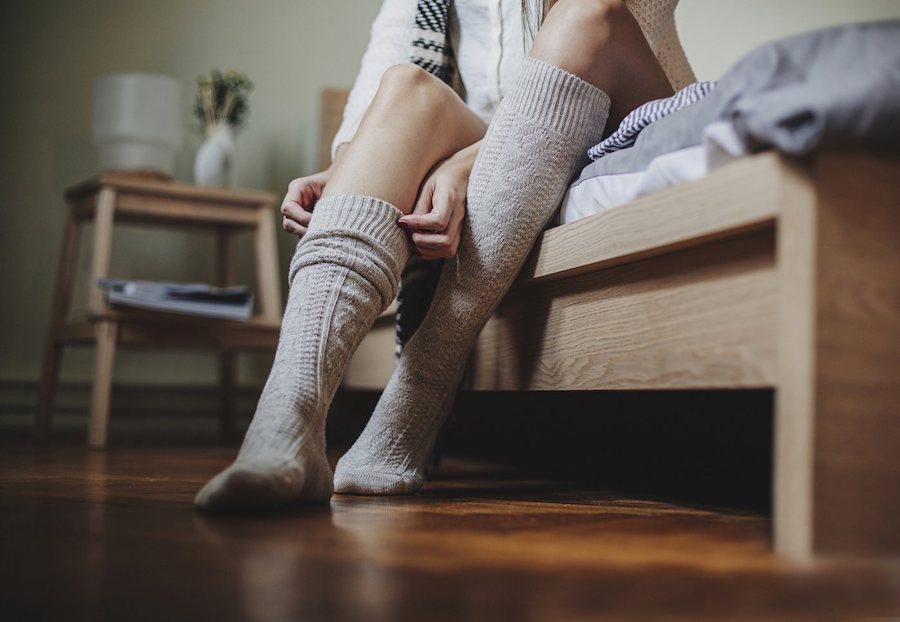If You're Using This Common Treatment on Your Cuts, Stop Now, Experts Warn
Experts warn you could be making the injury worse.
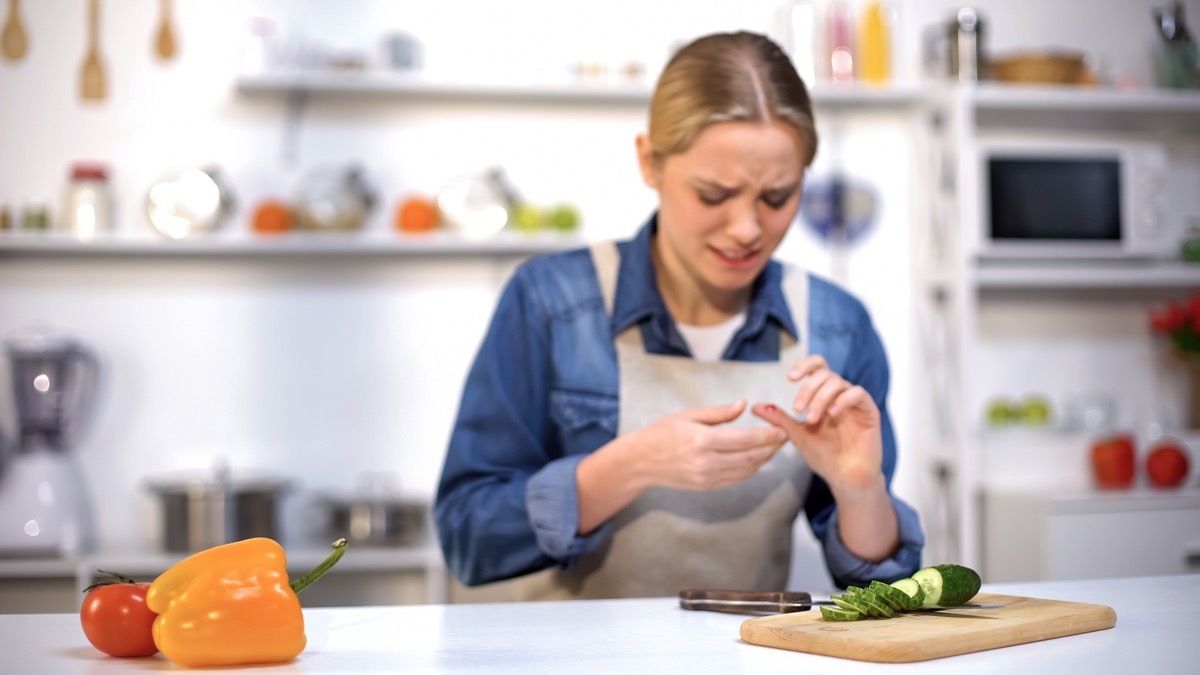
Cuts and scrapes are an unfortunate aspect of life, whether you get careless while chopping vegetables or end up with a blister after breaking in a new pair of shoes. These injuries are usually more inconvenient than they are serious, and we tend to keep supplies on hand to treat minor wounds at home. However, if you reach for this one common treatment to disinfect your cuts, you may want to reconsider. Read on to find out which product medical experts say you say you should stop using on your injuries immediately.
READ THIS NEXT: If You Notice This in Your Arms and Legs, Get a Blood Test.
A well-stocked first aid kit is a key component to treating minor wounds at home.
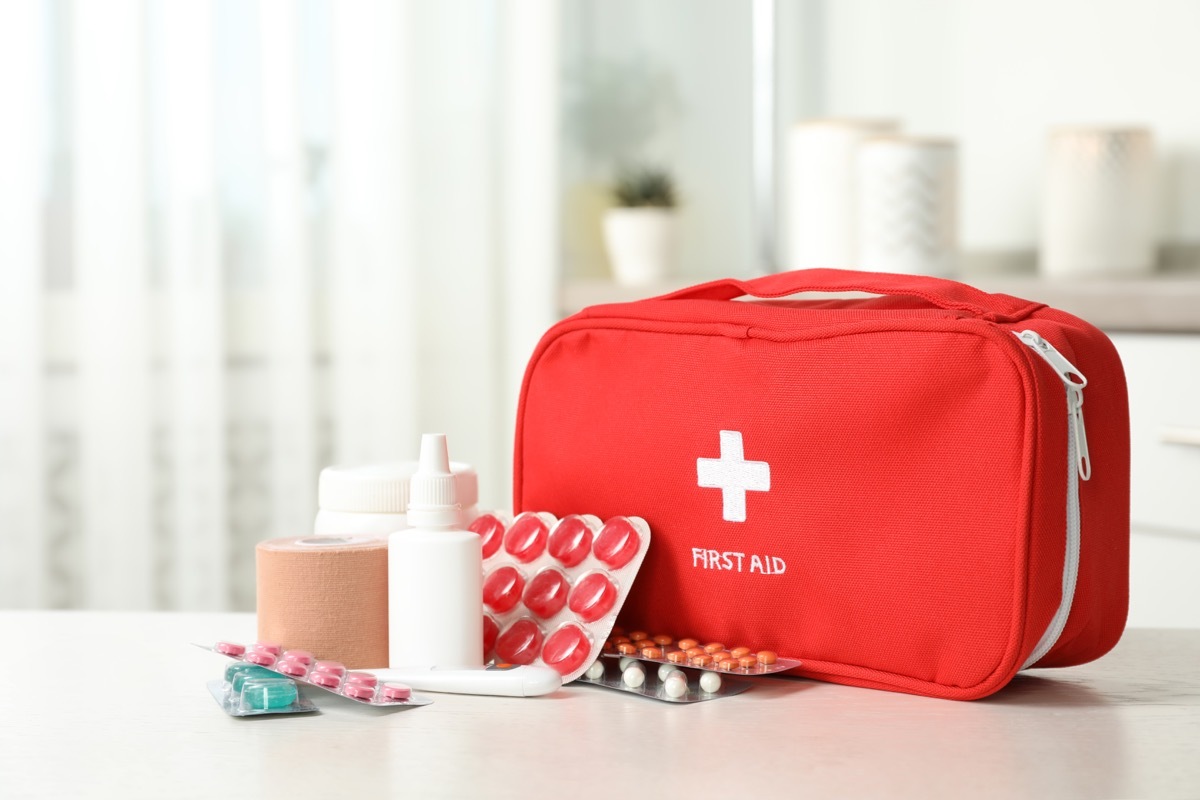
Cuts can be painful, but unless you are seriously injured, you likely won't be paying a visit to the doctor or emergency room. First aid kits are convenient to have on hand and often come equipped with the basic necessities to treat a minor wound, such as bandages, gauze, and cleansing wipes. The American Red Cross recommends also adding personal items, such as medications and emergency contact numbers, as well as anything your doctor suggests. If you have one of these kits stocked and ready to go, you might want to double check to make sure it doesn't have one common product, which could actually interfere with the healing process.
This age-old treatment could do more harm than good.
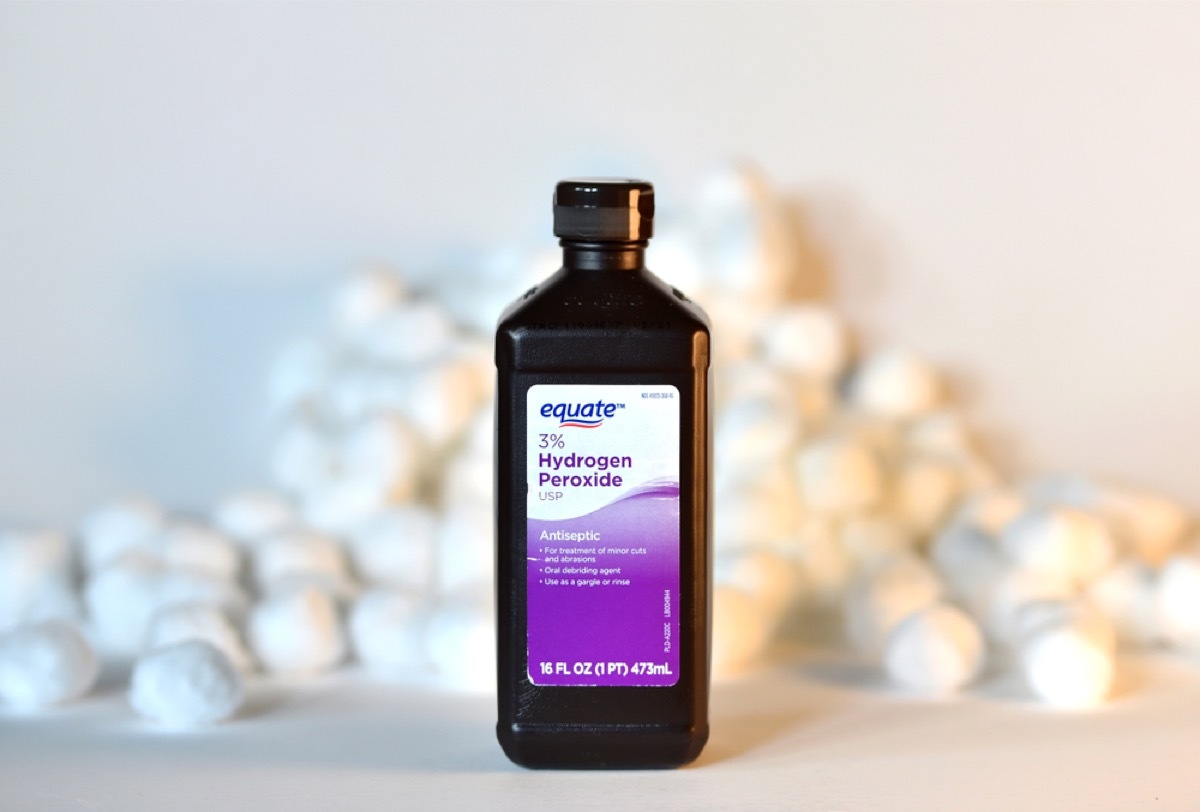
If your mom dabbed hydrogen peroxide on your scraped knee when you were a kid, you are not alone. This approach to disinfecting cuts is something many of us experienced growing up—and it seemed to always come with the warning that it "might sting a little." With that in mind, you may be surprised (and relieved) to learn that medical professionals suggest avoidinghydrogen peroxide in these instances.
"Hydrogen peroxide in high concentrations is caustic, and just like it kills bacteria, it also kills the healthy cells that are so important to the healing process," Stephani Laing, advanced care paramedic and CEO of Elite Emergency Reposnse Inc., says. "It also disrupts the formation/repair of blood vessels, which also slows healing."ae0fcc31ae342fd3a1346ebb1f342fcb
For more health advice delivered straight to your inbox, sign up for our daily newsletter.
The fizzy reaction that hydrogen peroxide creates is not a good thing.
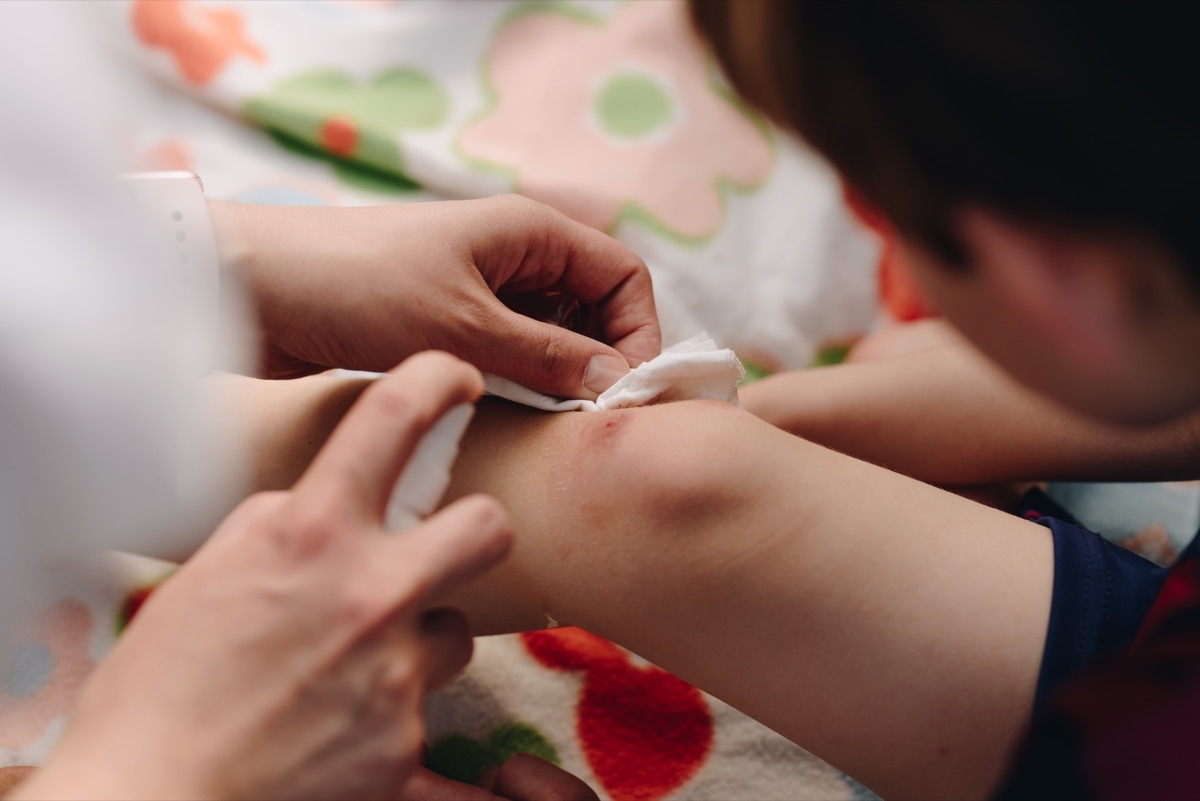
According to the Mayo Clinic, both hydrogen peroxide and iodine irritate your wound, as opposed to helping it, and should be avoided when tending to yourself or your loved ones. The familiar fizzy reaction you see on the surface of your skin does help remove debris from the wound, but it may also interrupt your body's natural and immediate response to heal on its own.
"Many folks think the bubbling means it's really working, but the foaming indicates a chemical reaction that's also damaging healthy cells," Laing explains. "It's much like when we take oral antibiotics, they kill bad bacteria but also good ones because they don't know the difference, which can cause secondary infections."
Laing added that this can be doubly problematic for people with diabetes and older adults whose healing processes aren't as effective. But the latter group might still be using hydrogen peroxide as a force of habit. "Since peroxide has been used for first aid since the 1920s, the older crowd, in particular, tends to still reach for it as the first choice for wound disinfection," she says.
If you end up with a cut, here's how experts recommend treating it at home.
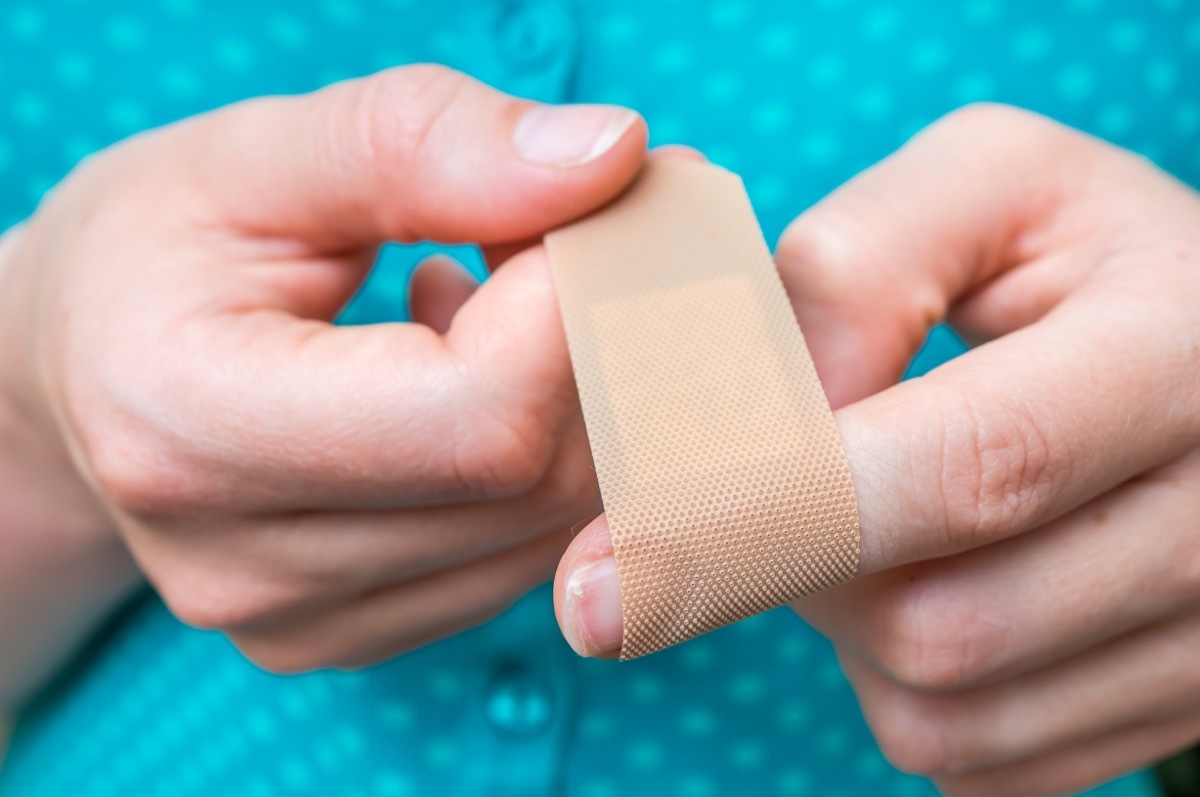
The Mayo Clinic recommends washing your hands before doing anything to treat your wound and then applying gentle pressure to stop any bleeding. Laing also suggests that running water and gentle soap is really the best approach for immediate treatment.
Next, you will want to swap out the peroxide for an antibiotic ointment like Neosporin, or petroleum jelly, which keeps the surface of your skin moist and also prevents scarring, according to the Mayo Clinic. You can then apply a bandage or gauze, and you'll want to change this dressing once a day or whenever it becomes dirty.
READ THIS NEXT: This Popular Med Is "The Most Dangerous OTC Drug," According to Doctors.

Sinabi ng mga doktor na ang tool na AI na ito ay maaaring makahanap ng mga nakatagong kanser sa suso

12 Hindi kapani-paniwala na mga larawan ng mga kababaihan na nagpapatunay na "gawa ng lalaki" ay hindi isang bagay
